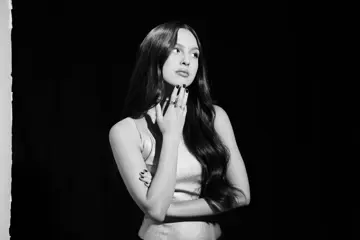Past reports show that global live music fans are generally cashed up. 72 per cent of Gen Z/ Millennials will travel long distances for the concert and festival experience, 85 per cent buy new clothes before each event, and many spend 20 more minutes getting ready for a concert than they do for everyday prep.
At the same time, Australian promoters told TheMusic.com.au that many genre-based festivals with exclusive A1 headliners—led by EDM ones—are growing in size because they are increasingly attracting fans from abroad.
As two new reports state, this kind of music tourism has become a massive business.
74 per cent of people from the Asia Pacific (APAC) who travelled to Australia for an event in the past three years did so for a concert or festival. It was a slightly larger crowd (85 per cent) for sports.
Like their Australian and New Zealand cousins, these jet setters have no qualms about jumping on a plane to soak it up in Coachella, Rock In Rio and Tomorrowland.
Don't miss a beat with our FREE daily newsletter
Sydney is the most popular destination for these jet setters, at 35 per cent, obviously because it is the closest. Then, it’s London (21 per cent), New York (17 per cent), Paris (16 per cent), and Dubai (15 per cent).
More music fans (89 per cent) than sports lovers (87 per cent) arrive between one and three days before an event, and 86 per cent of music types and 85 per cent of sporties stay one to three days after an event. Globally, the biggest spenders of music lovers are the 25-34 age group, with 31 per cent exceeding US$1,000.
Journey To The Centre
These figures are from The Value of Sports and Music Tourism, from Collinson International, owner of Priority Pass, which runs airport experience programmes.
According to the study, the journey experience to the concert or festival in Australia begins at the airport itself for 52 per cent. They visit the airport lounge (34 per cent), gaming lounge (15 per cent), food and drink options (57 per cent), sleep pod (16 per cent) and spa (13 per cent).
Said Christopher Evans, head of Collinson International, "Whether it's being in the crowd for the big game or watching your favourite artist at a festival, you can't beat live events – especially when they're combined with travelling the world.
“More than ever, people are travelling domestically and internationally for sports and music, and this year marks a special occasion, with a huge summer of major events taking place globally.”
London Bridge Is Calling
In the UK, music tourism was worth £8 billion (AU$15.7 billion) last year, according to just-released figures from trade association UK Music. This was an increase of 21 per cent from 2022, when it was £6.6 billion ($12.9 billion).
Of that, £4.2 billion ($8.2 billion) was spent directly on tickets, travel, accommodation, meals, and on-site purchases.
The other £3.8 billion ($7.4 billion) were costs such as security, fencing, and restaurants and bars buying supplies.
Music tourism directly created 62,000 jobs in 2023, up 17 per cent.
UK Music’s definition of a music tourist includes someone who travels from all over England to catch a festival or concert, as well as visiting from abroad. The total of these was 19.2 million fans. This was up 33 per cent from the previous year when they numbered 14.4 million.
Most were UK citizens travelling around the country, numbering 18.2 million, an increase of 36 per cent on 2022. Those coming from abroad totalled 1.014 million, marking a slight drop from 1.053 million in 2022.
For UK Music chief Tom Kiehl, the strong-arm pull of music travellers and the money injected into local economies “demonstrates the positive impact music tourism has on our towns and cities.
“But while music generates huge benefits for our local areas, beyond a handful of very successful musicians, the opportunities for many artists are becoming increasingly squeezed.”
This year, 50 festivals went belly-up or postponed, while in 2023, 125 venues closed up.
Need For More Aussie Data
The UK Music analysis has data that Australian research needs: a breakdown of music tourism in every UK region, including the number of visitors, the size of spending, and the creation of jobs.
If it did, it would, for instance, help local councils devise strategies for festivals and concerts and ensure music is at the heart of their planning and licensing policy.
So far, tourism bodies have provided the best data about the nature and effectiveness of music tourism in Australia.
Post-COVID, every state and territory has aligned music events with touring and branding initiatives.
When WA paid $8 million to get Coldplay to come from Singapore for two shows at Perth’s Optus Stadium late last year, it knew there were Asian fans who had missed out on seeing the Brit band.
So the Perth shows were also marketed through SE Asia, additionally offering tourism packages to see the rest of WA before and after.
Of the 130,000 fans slamming it at the Perth shows, 40,000 were from overseas or other parts of Australia. Tourism Council WA forecasts that each visitor stayed an average of four nights, injecting $68 million into the economy and creating 495 full-time equivalent jobs in WA.
There was anger in some sectors of the WA and Australian live music sector that the $8 million could have been spent on local venues and acts.
However, a Tourism Council WA survey of 800 folks found that 67 per cent thought it was a good investment.
The Coldplay ploy was more than making money for the state or being part of the Government’s plan to double in ten years the current $14 billion that tourism brings to the WA economy a year.
It also sent a strong message to Asian businesses: WA is in the same time zone for trading with, so bypass Sydney and Melbourne.
Taylor Made
WA had also pitched for Taylor Swift, but she only had time for Sydney and Melbourne. There were wildly varying estimates as to how much the seven Eras dates generated for the economies of the two states.
One estimate from NAB (National Australia Bank) put it at $300 million for both. Inner-city businesses in Sydney benefitted by $135 million in the four days (Feb. 23 to 26) she was in the Harbour City. Trade in merchandise stores was up 117 per cent, accommodation up 72 per cent, and bars and pubs ticked up 49 per cent.
About $33 million was poured into Sydney’s tourism, accommodation, and hospitality sectors.
No figures were released on how many international fans came, but Kiwis may have made up almost 20,000. Travel agent Flight Centre reported bookings from NZ to Sydney and Melbourne were up 64 per cent on the same period last year.
Air New Zealand, which initially put on 14 extra flights when the tour was first announced, ended up doing 63 flights into Sydney and 47 into Melbourne over three days before the shows.
Time For Harvest
Knowing that Secret Sounds could attract global fans with headliners like Jamiroquai and Beck, the South Australian Government appointed the promoter to curate its Harvest Rock festival in Adelaide.
Just how much Secret Sounds were paid remains locked in the vault. But in the first of the three-year partnership, Harvest Rock generated $16.5 million of new money for SA. The two-day event drew 23,940, of which 30 per cent hailed from overseas or other Australian places.
Visitors stayed an average of 4.5 nights in SA (3.3 nights in the Adelaide CBD), driving hotel occupancy up 95 per cent, and 57 per cent of businesses reporting a rise in sales and trade.
SA festivals have a history of drawing music tourists. They are 45 per cent of WOMADelaide sales. This year, when Adelaide Festival’s crowd hit a record 478,890, those from outside SA and Australia made up 30 per cent.
Of the 1 million at Adelaide Fringe in 2023, 45,000 were out-of-towners, generating $84.3 million, a 68 per cent increase from 2022, and generated 230,000 visitor bed nights.
The Tourism And The Rise Of The Arts: Understanding How Arts Festivals Create Value For The South Australian Economy Industry Report by Prof Ruth Rentschler and Dr Boram Lee from the University of South Australia urged SA to better market and encourage cultural tourism.
“Across Australia, cultural tourists travel further, stay longer and spend more than other tourists, with more cultural tourists attending the arts than wineries and sport, so this is a strong market to capitalise on for South Australia,” Rentschler said.
In another smart initiative, the Queensland Government invested $20 million over three years to make the state a music tourism destination. This was for the Queensland Music Trails, which kicked off in 2023 and linked music events with local tourism, art, and cultural experiences. Marketing was in the US, NZ, Korea, Japan, UK, and China.
Melbourne Lanes
In Melbourne, international music tourism is encouraged. Streets are named after AC/DC, Chrissie Amphlett of Divinyls, and Rowland S. Howard of The Birthday Party. Council meetings are held over Seekers Lane and, according to one media report, after Kylie and Dannii.
Regional Victoria is regarded as having great opportunities to expand music tourism, especially to contemporary music festivals.
According to Music Victoria’s Regional Live Music Census Report 2021–2022, 89 of them existed just before COVID-19. In the year before, they drew 405,380 punters, 49 per cent of whom were from metropolitan areas. They generated $176.6 million and created 4,500 jobs.
Stressing how important regional music festivals and concerts, Music Victoria recommended the State Government fund upskilling courses for event workers, set up a funding program for local councils to create fully equipped (audio/lighting) all-weather outdoor performance areas and venue operators to adapt existing outdoor spaces.
It suggested working with regional festivals to help overcome their challenges and create permanent storage spaces for local organisations to access production facilities.
The association also urged the government to create and convene a Regional Live Music Taskforce comprising music and tourism bodies and music promoters and to include music events in Visit Victoria’s Australian and international marketing.
One obvious destination for visitor tourism experience was A Day On The Green, which, with a mix of vineyard locations, premium food and drink offerings, and international and Australian headliners (up to 25,000 for Robbie Williams last spring), has sold 4 million tickets since 2001, generated six albums, three TV specials, and a merchandise range that sold 63,000 T-shirts and 172,000 stubby holders.
Other major draws include Beyond The Valley (35,000), Queenscliff Music Festival (25,000, of which 66 per cent are female), Port Fairy Folk (8,000, down from 12,000 pre-COVID), Meredith Music (12,500), and Golden Plains (12,500).
Up to 94 per cent of attendees at some of these events come from outside the region, with 44 per cent staying two nights locally and 34 per cent staying three nights.
Their marketing includes natural assets and landscapes, vineyards, historical and cultural attractions, First Nations lifestyles and local sports events.
A spokesperson for Beyond The Valley explained, “Whatever challenges we face as an industry, there is still a strong interest in the multi-day camping festival format.”
















